Grilling Perfect Steaks Every Time, Every Steak
There are few culinary joys more pure and simple than the first bite of a perfectly cooked, perfectly seasoned steak. And if the steak was kissed by flames as it cooked, imparting it with fiery, smoky flavor, all the better. But cooking steaks perfectly on a grill is not as intuitive as we’d like it to be. That’s why a perfectly cooked version is such a treasure: so many grilled steaks are anything but perfect. Here, we want to give you 5 tips you need to know to make sure each and every steak you grill is perfect every time. Get your thermometers out, it’s time to cook.
Get the tool you need most for this cook:
1. Flip at least once before testing the temperature
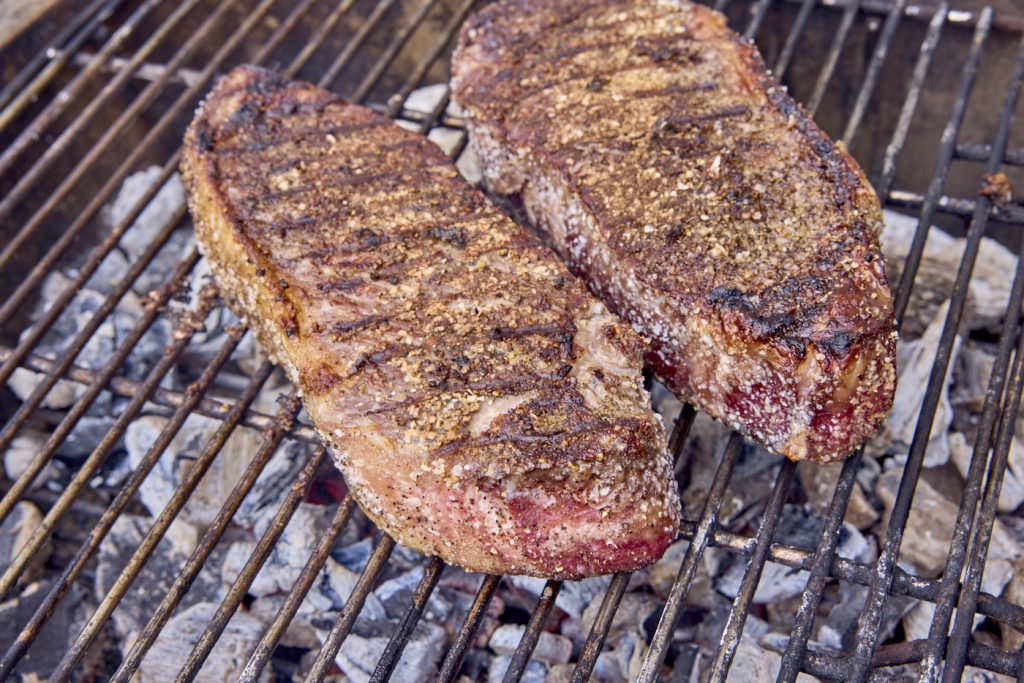
It may seem obvious to point out, but steaks on the grill cook from the grilling surface up. All the heat that is transferred from the piping hot grill surface to the meat directly adjacent to it has to reach the center of the steak for it to be fully cooked through. Your steaks will be much hotter down close to the grill than they will be in the center or near the top. Those different temperatures within the same piece of food are called gradients. And before you flip your steak, all the gradients run in one direction.
Flipping your steak not only browns both sides of the steak, but it also helps cook the steak from both sides. Once you’ve flipped your steak, you will begin to notice that the coolest part of the steak is now in the center. We call this the “thermal center,” and it is the key to grilling perfect steaks.
2. Push the probe tip past center & pull back through the steak
Properly understood, finding the current temperature of a steak means finding the temperature of the thermal center of that steak. While some chefs recommend inserting the probe from the side, we find that the easiest way to find the temperature of the center of a steak is to insert the thermometer probe tip into the steak from the top, avoiding bone.
Push the Thermapen probe tip past where you think the center of the steak is…
…and then pull the Thermapen probe tip back through the steak until you find the coolest temperature reading. This will be the steak’s thermal center—the coolest temperature in the center of the steak.
For example, if you push your probe tip past the center of the steak and see 136°F (58°C) on the Thermapen display, and then, as you pull the probe tip back through the steak, you see 128°F (53°C), 123°F (51°C), and 127°F (53°C); you know that the temperature at the thermal center of that steak is the lowest reading: 123°F (51°C).
3. Verify your readings in multiple places
As you get closer to the target pull temperature for your desired doneness (find a chart of chef-recommended doneness temperatures here), you’ll want to verify the thermal center temperature of the steak in a couple of different places. Typically, the steak will be hotter near the ends, but you may find a lower number as you check your steak in different places. Remember, the lowest number you find is the best indication of the internal doneness of that steak.
Note: Sometimes people ask if they shouldn’t avoid probing a steak multiple times for fear of “letting all the juices out.” Steaks are not like water balloons. The water in the steak is bound up in the cells of the muscle fibers. You may lose a tiny amount of steak juice from probing a steak but that amount pales in comparison to the amount of water you will lose from overcooking your steak by even five degrees. Probe fearlessly and have perfectly done juicy steaks every time!
4. Pull when the lowest number reaches your target pull temperature
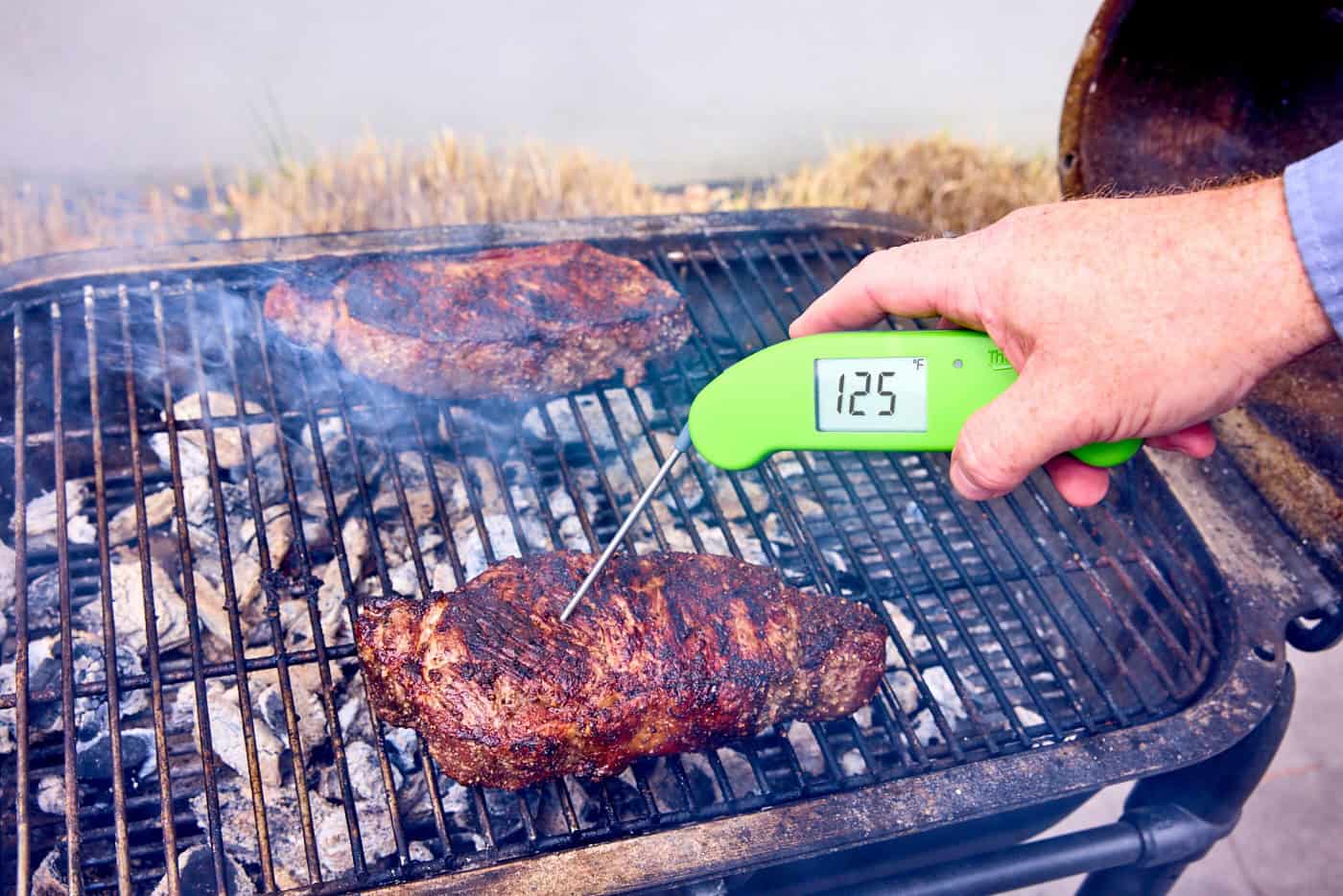
Steaks come in different shapes, sizes, and thicknesses. Two steaks from the same package will typically look very different, let alone different cuts of steak. Add the variability of hot spots on certain grills and you end up with steaks that will be done at different times. One of the paradigm shifts of owning a Thermapen is that you can remove each steak when it reaches its target temperature and not a moment before. If you are aiming for medium rare goodness and one of your steaks shows a lowest internal reading of 127°F (53°F), pull that steak off the grill, not all of the steaks. Another steak right next to it may only be at 123°F (51°C).
different sizes and shapes of steaks + a variable cooking surface = different cooking rates
Let the steaks that are done rest on the platter while they wait for the other steaks to reach the same perfect doneness temperature. Test every steak and get perfect results every time!
Note: Our chef-recommended temperature for medium rare steaks is 130°F (54°C), but because of the high heat of the grill cooking environment, grilled steaks will experience a little carryover cooking, so we pull our steaks at 127°F (53°C) or 128°F (53°C) and let them “rest up” to 130°F (54°C).
5. Always use a Thermapen
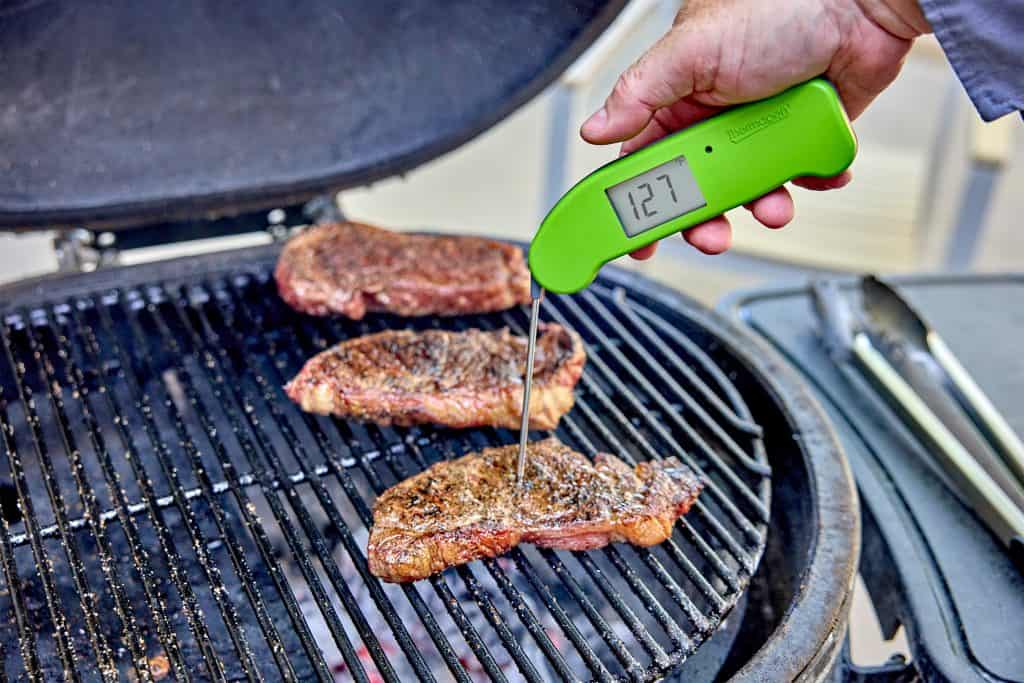
None of these steps (except maybe step 1) are possible with inferior thermometers. The difference between using Thermapen ONE or Classic Thermapen to check your steaks on the grill and using a dial thermometer or a competitive digital thermometer is like the difference between using an electric drill to drill a hole in the wall and spinning a sharp stick between your hands. Using the right tool for a job makes getting the right results easy.
Unlike other thermometers you might have in your home, Thermapens have a professional-grade thermocouple in the very tip of the probe. That thermocouple gets to within ±0.7°F accuracy in 2-3 seconds. But once it comes to temperature, it shows you changes in temperature in real time. Thermometers with 10+ second response times don’t show you the gradients as you pull them through a steak. They are still trying to recalibrate to each new temperature. Your hand starts to scorch as you wait for the reading to update and you never have confidence that the number you saw was accurate.
But finding the thermal center of a steak is easy with a Super-Fast Thermapen ONE, which makes getting perfect steaks a reality. And that little change just might make a difference in your life!


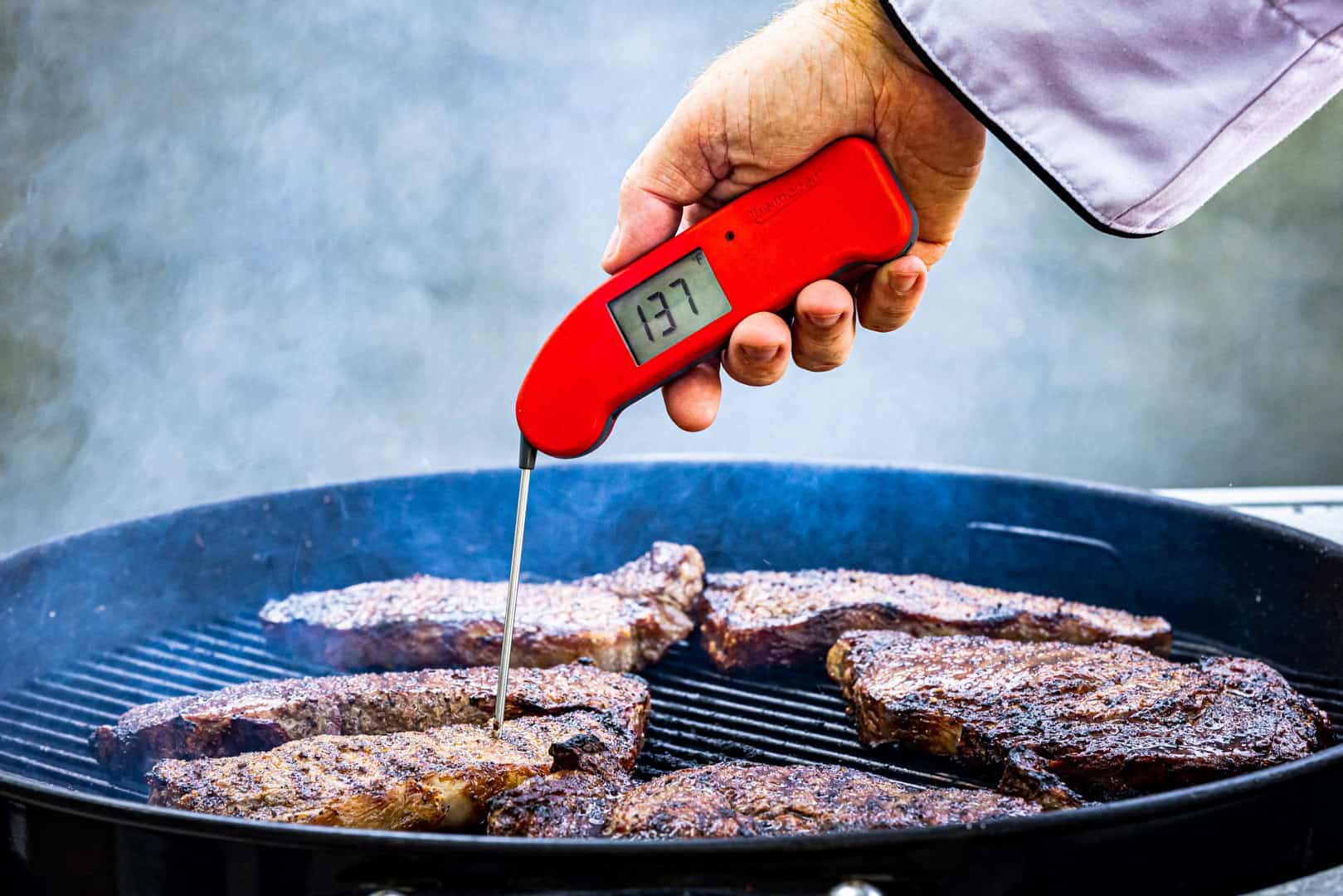

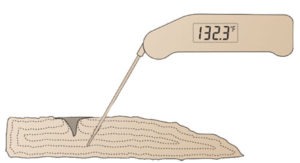
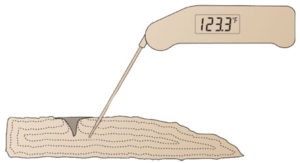
Will a ThermoPop be capable for this task?
The ThermoPop is not as accurate or quite as fast, but you can use a ThermoPop. It is a thermistor, not a thermocouple, but is faster than the other thermistor thermometers on the market.
The Thermapen Classic is the most important cooking tool I ever purchased – glad I discovered your company.
Thanks, Lee!
I have a fear of undercooked meat so I tend to overcook! I used 3 different types of thermometers, one by one, checking the meat and always got 3 different readings. Needless to say, I was never confident of a perfect outcome. I’m a new ThermoPen owner and it has freed me of the guessing game! I can hold it up in the air and shout to my family, “Have no fear! ThermoPen is here!” ? So, THANK YOU!
Hooray! So glad you are grilling confidently.
Great information, This explains why when following other recommend Temps. The meat is over cooked. I love my Thermoworks cooking tools.
Excellent, practical advice on how to properly measure the temperature of a steak with my Thermapen. I will be able to use this immediately!
My sons and I like our steaks medium rare. Ever since I got my Thermapen which I have used every time I cook steaks which is almost weekly and sometimes more I have had perfect results. I definitely wouldn’t have had perfect results without my Thermapen. Thank you Thermapen!!
Great to hear. Enjoy!
Loved this article! It is just in time for my steak dinner tonight with visiting family. Going to be using the Smoke & MK4 to make a batch of medium-rare steaks 🙂
How often do you recommend the steaks be turned. Some chefs say hot potato method where it is turns every couple minutes others say only turn once. What is your preference?
Steve, we go with the recommendation of our friend Kenji Lopez-Alt of the Food Lab and SeriousEats.com that you can flip away. More flipping just means more even cooking from both sides. If you are looking for perfect cross-hatch grill marks, you may only want to flip three times (for grill lines in two directions on both sides) but more flipping does not hurt the doneness of the steaks at all. And with chicken or hamburgers, its essential.
I have two thermapens, one for the kitchen/back porch grill, and one for my beer brewing shack. I love it as much as I love my AmeriCraft cookware, which is A LOT! One question – brewing beer in a foot deep pot, I need to get a consistent temp of about 152 throughout. Can I get a longer probe for my thermapen? Thank you
Neil,
We are glad to hear that you love your Thermapens! Accuracy is very important in brewing, as you well know, so your question is understandable. Unfortunately, there aren’t extensions for the Thermapen probe, nor are there Thermapens with longer probes on them.
But despair not! We may have a solution for you anyhow. First, if you need a consistent 152ºF throughout your pot, you can get an accurate reading by stirring the pot (this will mix and average all the temps from the various parts of the pot) and then measuring in the center as deeply as you can with your Thermapen.
Getting your probe to the floor of the pot is unnecessary, and in fact not recommended for accurate temping! The 4.3″ probe length will get you very close to the thermal center of the pot, and if the liquid is moving from a good stir, you’ll get an accurate read on the temp.
Second, we do sell thermometers that have longer probes available, such as our ChefAlarm, for which you can buy a 12” Pro-Series Probe. The ChefAlarm is also one of our leave-in probe models allowing you to track your temps over time, so you can watch how your wort cools or maintains temp over the course of your brew.
I hope that helps, and wish you happy brewing!
When I grill 1 1/2 inch steaks on Weber grill direct heat for searing then low I have to take off the steak at 104 then rest it for medium rare. I have verified that my thermo pin is accurate. My steak temp rises to med rare while resting
Everything I read takes about taking steak up at 125
Why do I different results that others
It may have to do with how hot your grill is or how close your meat is to your coal bed. A more intense/direct/close heat will result in more carryover. Also, thicker steaks have more carryover. A nice thick steak cooked close to a bed of coals will have a lot more carryover than steaks with a little more distance from the heat.